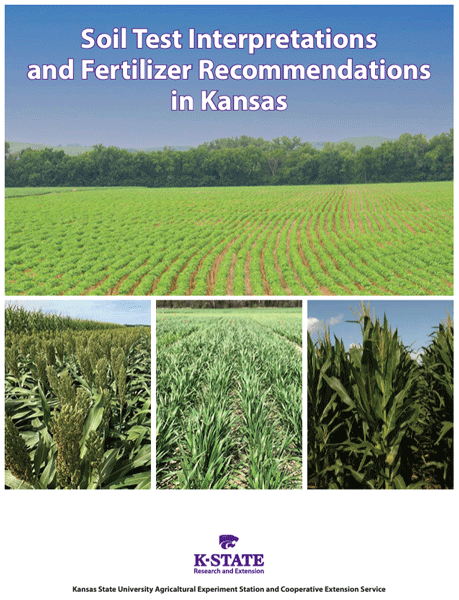The Agronomy Soil Fertility Working Group at K-State, led by soil fertility specialist Dorivar Ruiz Diaz, has released an updated version of the popular publication MF2586 “Soil Test Interpretations and Fertilizer Recommendations in Kansas.” This publication contains the most recent soil test interpretations for the major crops for the most commonly deficient plant nutrients in Kansas.
Developing sound nutrient management programs involves understanding a wide range of information. Soil test records are an important piece of that information, but other factors, such as soil moisture conditions, land ownership/tenure, crop and cropping sequence, pest management, cultural practices, environmental issues, and other management items, are vital for developing sound nutrient management programs. It is beyond the scope of this publication to detail the ramifications of all these factors, but they should not be overlooked when finalizing nutrient application programs.
The tables, equations, and accompanying information in this publication are the most recent soil test interpretations for major crops for the most commonly deficient plant nutrients in Kansas. These interpretations are valid for interpreting soil test values from the KSU Soil Testing Laboratory and other laboratories using the same soil testing procedures.
Appropriate estimate of expected yield is a key component
Suggested recommended application rates are tied to expected yields for several nutrients. Yield records should be used to set an individual and realistic but progressive expected yield for each field. An appropriate expected yield for a specific field should be high enough to take advantage of high production years when they occur but not so high as to jeopardize environmental stewardship and/or profitability when environmental conditions are unfavorable. Appropriate expected yield should be about 105% of the average yield obtained in a field over the past three to five years.
Updated for 2024
Some portions of the publication that were updated include, but aren’t limited to:
- Nitrogen recommendations for corn, grain sorghum, and wheat
- Liming recommendations
- Expanded explanations on phosphorus recommendations
- Separate section for potassium recommendations
The full publication is available online at https://bookstore.ksre.ksu.edu/pubs/MF2586.pdf

The work was made possible through the committed financial support of the Kansas Fertilizer Research Funds. The Kansas Department of Agriculture has established a “Fertilizer Tonnage Fee,” which collects a set amount of money per ton of fertilizer sold or distributed for use in Kansas. Of this amount, $0.04/ton is transferred to Kansas State University for fertilizer-related research.
Dorivar Ruiz Diaz, Soil Fertility and Nutrient Management Specialist
ruizdiaz@ksu.edu